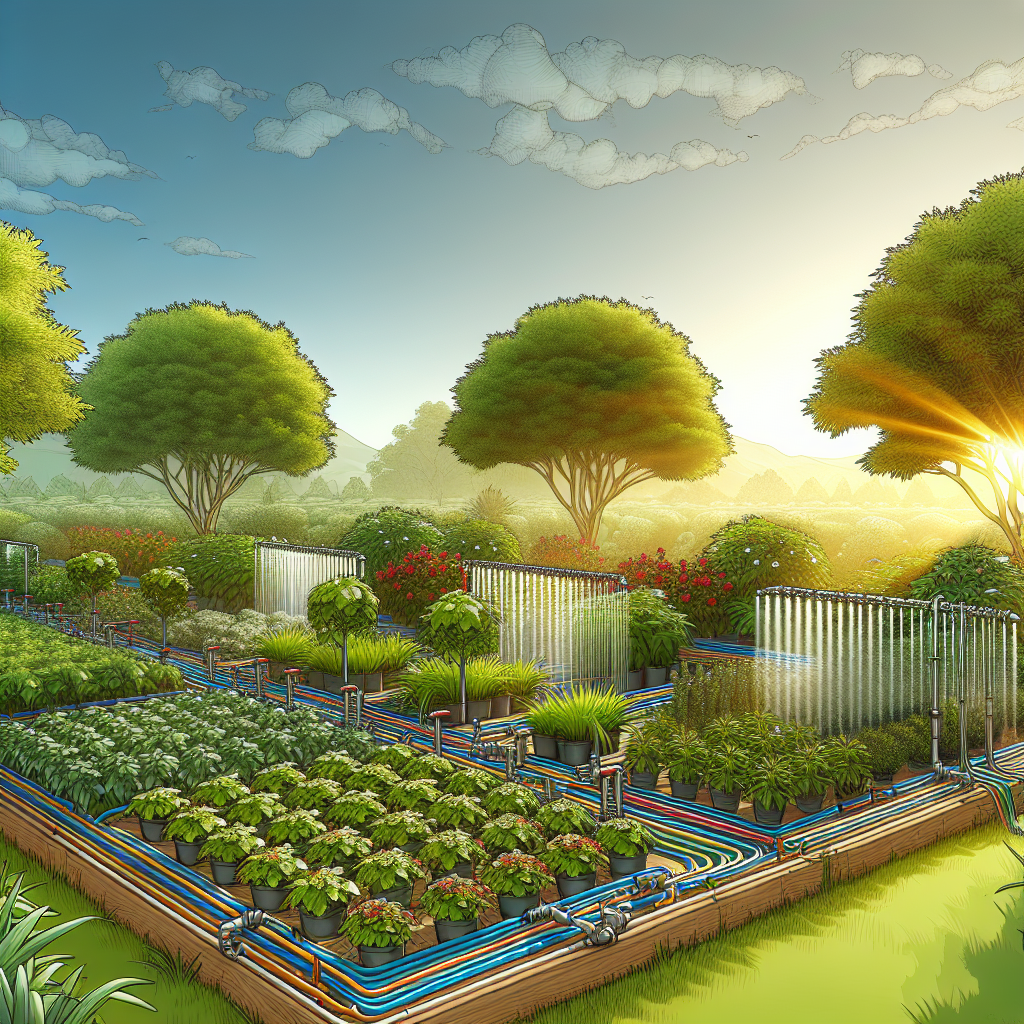Achieving Optimal Growth with a Thoughtful Slow Drip Irrigation Setup
In the world of agriculture, one of the key factors that determine the success of a crop is its access to water. Water is essential for plant growth, and ensuring that crops receive the right amount of water at the right time can significantly impact their productivity and quality. One method that has gained popularity in recent years is drip irrigation, a system that delivers water directly to the roots of plants through a series of tubes and emitters. This method is known for being more efficient than traditional irrigation systems, as it minimizes water waste and allows for precise control over the amount of water delivered to each plant.
While drip irrigation can be highly effective in promoting optimal growth, it is important to set up the system thoughtfully in order to maximize its benefits. In this article, we will explore some key tips for achieving optimal growth with a thoughtful slow drip irrigation setup.
1. Understand the needs of your crops
Before setting up a drip irrigation system, it is crucial to understand the specific water requirements of your crops. Different plants have varying needs when it comes to water, and providing either too much or too little water can have negative effects on their growth. Research the watering needs of each type of crop you are growing and adjust your drip irrigation system accordingly.
2. Choose the right components
When setting up a drip irrigation system, it is important to choose high-quality components that are durable and reliable. This includes tubing, emitters, filters, valves, and connectors. Investing in good quality components will ensure that your system operates efficiently and effectively over time.
3. Plan your layout carefully
The layout of your drip irrigation system plays a crucial role in its effectiveness. Take into account factors such as slope, soil type, plant spacing, and sun exposure when planning the layout of your system. Consider using different types of emitters for plants with different watering needs and adjust the placement of emitters based on plant size and root depth.
4. Monitor soil moisture levels
One of the advantages of drip irrigation is its ability to deliver water directly to plant roots, reducing evaporation and minimizing runoff. However, it is still important to monitor soil moisture levels regularly to ensure that plants are receiving adequate hydration. Use moisture sensors or manual testing methods to check soil moisture levels and adjust watering schedules as needed.
5. Control weeds effectively
Weeds can compete with crops for water and nutrients in a field or garden, so it is important to control them effectively when using a drip irrigation system. Mulching around plants can help suppress weed growth while also conserving soil moisture by reducing evaporation.
6. Consider automation
Automating your drip irrigation system can help save time and ensure consistent watering schedules for your plants. Consider installing timers or sensors that automatically control when and how long water is delivered through the system based on environmental conditions.
7.Ensure proper maintenance
Regular maintenance is essential for keeping your drip irrigation system running smoothly. Check for clogged emitters or tubing regularly and clean or replace them as needed. Inspect valves, filters, connectors, and other components for signs of wear or damage and make repairs promptly.
By following these tips for achieving optimal growth with a thoughtful slow drip irrigation setup,
you can ensure that your crops receive just the right amount of water they need for healthy growth
and maximum productivity.
In conclusion,drip irrigation has become an increasingly popular method for promoting optimal
plant growth due to its efficiency,saving money,and conserving resources.As many farmers
are switching from traditional methods,it’s important
to set up their systems thoughtfully by understanding
the specific needs,crops they’re growing,making sure
they choose quality components,and planning out area carefully.With proper monitoring,maintenance,and
automation,drip irriantion systems can provide consistent,
precise watering leading imporved yields,end sustainability
for agriculture industries as well as helping conserve
water resources globally.













